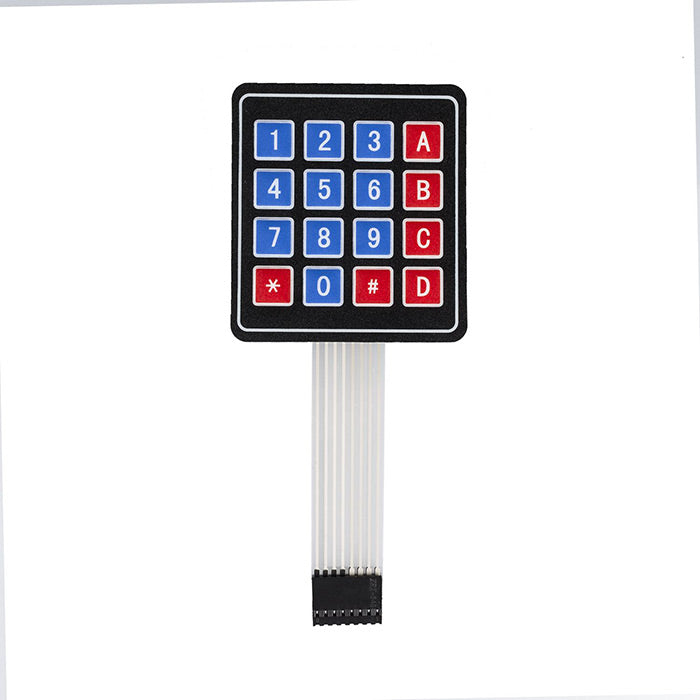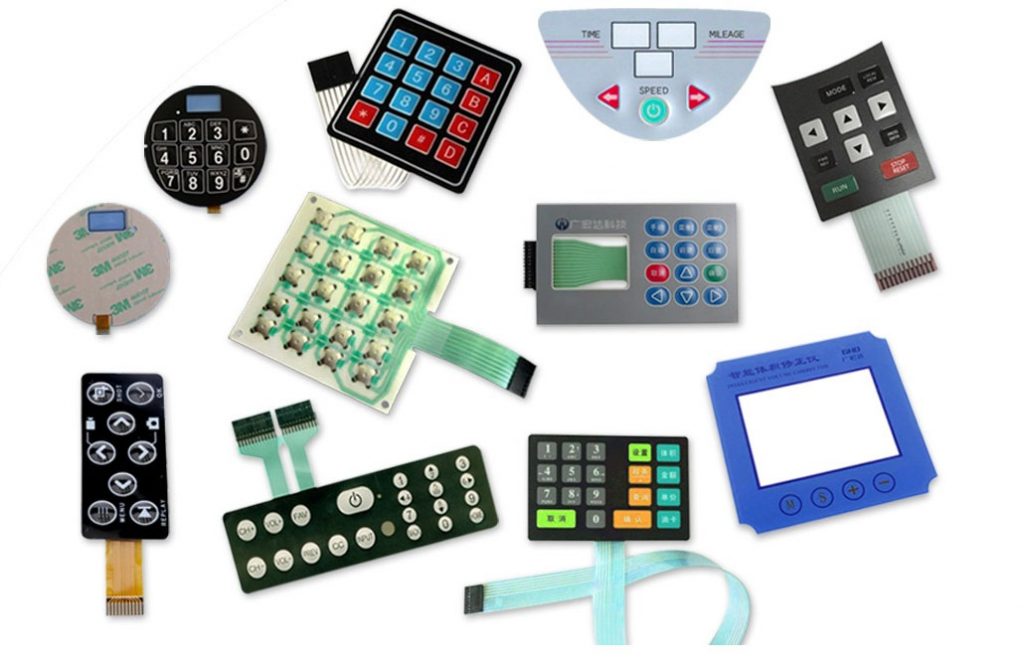Membrane Switch Manufacturer Providing Long-Lasting and Resilient Interfaces
Understanding the Value of Membrane Switch in Modern Electronic Devices and Their Applications
Membrane changes function as a crucial component in contemporary electronic devices, providing a reliable interface for individual communication. Their personalized and lightweight nature makes them appropriate for a variety of applications throughout diverse sectors. Understanding their crucial parts and benefits can offer understandings into their expanding relevance. As technology continues to breakthrough, the evolution of Membrane changes questions about their future applications and design advancements. What exists in advance in this vibrant area?

What Are Membrane Switches?
Membrane switches are essential parts in modern-day electronics, offering as individual interfaces that promote interaction in between tools and users. These buttons contain numerous layers, including a visuals overlay, an adhesive layer, and a circuit layer, every one of which job together to create a useful and resilient user interface. The design enables a level, low-profile option that can be customized relating to dimension, shape, and aesthetic look, making them suitable for numerous applications, from consumer electronics to clinical tools. The tactile comments given by Membrane changes enhances user experience, while their resistance to dirt and dampness makes them perfect for testing settings. Additionally, Membrane buttons can incorporate functions such as backlighting and published graphics, better expanding their functionality. Their versatility and toughness make them a favored selection in industries where dependability and convenience of use are vital, ultimately adding to the smooth procedure of modern-day digital tools.
Key Components of Membrane Switches
While various elements add to the performance of a membrane switch, three main layers play considerable functions in its style and operation. The top layer, normally made from a sturdy polymer, offers as the user interface for customer communication, commonly including published graphics and symbols. Below this is the spacer layer, which preserves the required distance in between the leading layer and the circuit layer. This spacer layer guarantees that the switch activates only when pushed, protecting against unintended inputs. The circuit layer includes conductive traces that complete the electric circuit when the top layer is depressed. These traces can be made from numerous products, consisting of copper or silver. Together, these components develop a reputable and robust tool that is portable and flexible, suitable for a vast variety of electronic applications, from house home appliances to medical gadgets. Understanding these essential components is vital for valuing the overall capability of Membrane switches.
Benefits of Utilizing Membrane Changes

Membrane Switch Manufacturing Refine
Comprehending the Membrane switch production process exposes the intricate actions included in generating these necessary components. The process commonly begins with the layout phase, where specs and designs are produced making use of specialized software application. Following this, the visuals overlay is printed on a versatile substratum, frequently making use of high-resolution printing techniques to assure clarity and precision.Next, the adhesive layers are used, which offer to bond the various elements with each other. The circuit layers, made from conductive inks or materials, are after that published onto a separate substrate. These layers are very carefully straightened and laminated to produce a practical switch.After setting up, the buttons undertake testing to confirm functionality and sturdiness. Quality assurance actions are implemented throughout the process to determine and fix any kind of issues. Finally, the completed Membrane buttons are packaged and prepared for distribution, ready to meet the demands of modern-day electronic applications.
Applications of Membrane Changes in Different Industries
Membrane switches are progressively used across various industries, particularly in medical devices and consumer electronics. In the clinical area, they supply trusted control user interfaces for gadgets that need exact operation. In customer electronic devices, these buttons improve user communication by supplying receptive and streamlined user interfaces. Receptive Medical Devices Control
Numerous modern-day clinical devices utilize Membrane switches for structured operation and boosted individual interaction. These buttons supply a trustworthy, long lasting interface for a selection of applications, including analysis tools, individual monitoring systems, and medical instruments. Their personalized styles enable details designs that can accommodate the unique demands of healthcare specialists, guaranteeing instinctive navigation and reliable access to important features. Furthermore, Membrane switches are immune to contaminants, making them appropriate for clean and sterile atmospheres. The other responsive feedback they use can improve customer confidence, lowering the risk of mistakes throughout important clinical treatments. In general, the assimilation of Membrane buttons in medical devices substantially adds to enhanced operational performance and person safety in health care setups.
Consumer Electronics Interfaces
In the domain of customer electronic devices, Membrane switches play a critical duty in enhancing interface across a large range of devices. These switches are important to items such as remotes, microwaves, and video gaming consoles, giving a efficient and user-friendly user interface. Their layout permits for a smooth integration of graphics and functionality, enabling producers to produce streamlined, modern-day visual appeals without jeopardizing functionality. Membrane buttons are likewise recognized for their durability, frequently standing up to substantial usage and direct exposure to my review here numerous ecological problems. In addition, they can integrate functions like backlighting and tactile feedback, additional improving the user experience. As consumer needs for innovative yet instinctive interfaces grow, Membrane changes remain to be an important part in progressing electronic tool capability.
Style Considerations for Membrane Switches Over
Creating effective Membrane changes needs careful focus to various factors that affect both performance and user experience. One essential consideration is the choice of products, as they can affect resilience, responsive responses, and visual appeal. Picking an appropriate adhesive is important for assuring long-lasting adhesion and resistance to ecological factors.In addition, the format and design of the button should accommodate user communication, with switch dimensions and spacing optimized for ease of usage. The consolidation of graphics and labeling must prioritize clearness and visibility under different lighting conditions.Consideration of electrical features, such as actuation force and button sensitivity, will certainly enhance the responsiveness of the Membrane button. Furthermore, the layout ought to suit producing processes to ensure cost-effectiveness and prompt production. On the whole, a well-thought-out style boosts both the customer and the functionality experience of Membrane buttons in modern-day electronics.

Future Patterns in Membrane Switch Modern Technology
As modern technology continues to evolve, Membrane switches are positioned to incorporate new developments that will improve their performance and application in different areas. One considerable pattern is the consolidation of resilient and versatile materials, which will increase the lifespan and reliability of these switches. Enhanced surface area textures and adjustable graphics are additionally prepared for, permitting for even more intuitive user interfaces.Moreover, the integration of smart innovation, such as touch-sensitive surface areas and haptic link feedback, is expected to boost individual interaction, making Membrane switches a lot more engaging and responsive. Furthermore, breakthroughs in printed electronics will make it possible for much more complicated circuitry within thinner profiles, further broadening layout possibilities.Sustainability will certainly likewise play a crucial function in future developments, as manufacturers discover eco-friendly products and manufacturing processes. Generally, these trends will certainly ensure that Membrane switches over stay indispensable and appropriate in a increasingly digital and interconnected globe.
Frequently Asked Inquiries
Exactly How Do Membrane Changes Contrast to Conventional Mechanical Buttons?
Membrane switches deal advantages over standard mechanical switches, including reduced size, lighter weight, and boosted toughness. They generally provide a secured surface, improving resistance to dirt and moisture, making them suitable for diverse applications.
What Products Are Generally Used in Membrane Switch Building And Construction?

Can Membrane Changes Withstand Extreme Environmental Issues?
Membrane buttons can endure severe ecological conditions, relying on their design and products. High-quality buildings usually feature durability against temperature level fluctuations, humidity, and direct exposure to chemicals, making them ideal for various requiring applications throughout industries.
How Much Time Do Membrane Changes Typically Last Before Failure?
Membrane switches over generally display a life-span varying from 1 to 10 million actuations, depending on elements such as use regularity, ecological conditions, and producing top quality. Normal maintenance can extend their sturdiness and functional integrity substantially.
Are Membrane Switches Customizable for Particular Applications?
Membrane switches are without a doubt personalized for specific applications. They can be tailored in performance, layout, and dimension, permitting suppliers to fulfill one-of-a-kind customer requirements and enhance product aesthetic appeals while preserving operational efficiency and resilience. Membrane buttons are crucial parts in modern-day electronics, serving as user interfaces that facilitate communication in between gadgets and individuals. The tactile feedback provided by Membrane switches enhances customer experience, while their resistance to dust and moisture makes them ideal for testing atmospheres. The incorporation of graphics and labeling should focus on clearness and visibility under numerous illumination conditions.Consideration of electrical characteristics, such as actuation pressure and switch level of sensitivity, will certainly enhance the responsiveness of the Membrane switch. Boosted surface area textures and personalized graphics are likewise prepared for, enabling for more instinctive individual interfaces.Moreover, the assimilation of wise technology, such as touch-sensitive surface areas and haptic feedback, is anticipated to improve customer communication, making Membrane switches over a lot more responsive and appealing. Membrane switches deal advantages over standard mechanical switches, consisting of reduced dimension, lighter weight, and boosted sturdiness.